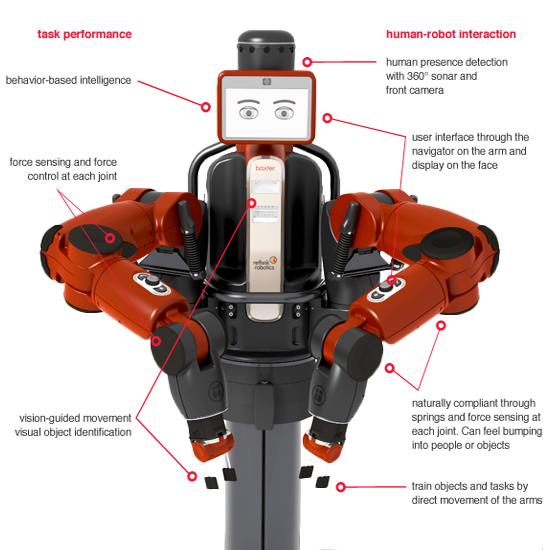
In general, the cost of owning an industrial robot has dropped in recent years, but for smaller companies the notion of using an in-house robot is still an expensive and complicated affair. The affordable and easily programmable new Baxter robot wants to change all that.
Created by Rethink Robotics, Baxter has a face that looks like a tablet and simultaneously acts as an input interface and a means for detecting what information the robot is processing, augmented by face animations that indicate Baxter’s current “emotional” state. According to the company, the robot requires no programming knowledge, allowing users to direct its actions by direct physical manipulation and simple on-screen prompts. Baxter can handle diverse factory tasks such as loading, machine operation, light assembly, sorting and inspecting, and packing and unpacking.
via DVICE
Continue reading
Related

The research we’re talking about here is from a paper titled, “Robot Learning Manipulation Action Plans by ‘Watching’ Unconstrained Videosfrom the World Wide Web.” The paper is really about visual processing: watching a human interacting with objects in a video, and then figuring out what that human is doing and how…

Last time we saw DARPA's Autonomous Robotic Manipulation testbed robot, it grabbed one of our cameras by the face. That was fun, but it's not especially practical. Now, this—this is practical: using some low-cost (sub-$3,000) hands from iRobot and Sandia National Labs, the robot can now autonomously use tools to mostly change a car…

Interested in building and programming your own robot? You might want to give Antbo a try. Billed as the "insect robot designed for anyone with an inquisitive mind," it's a programmable entry-level kit for beginners or anyone with a casual interest in robotics.via Engadget Continue reading








